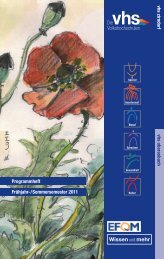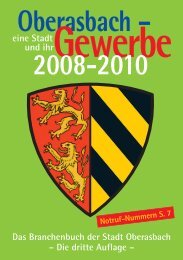Der NEUE Katalog ist da! - PRO PUBLIC GmbH
Der NEUE Katalog ist da! - PRO PUBLIC GmbH
Der NEUE Katalog ist da! - PRO PUBLIC GmbH
You also want an ePaper? Increase the reach of your titles
YUMPU automatically turns print PDFs into web optimized ePapers that Google loves.
Serum-free Systems<br />
Panserin 413 is a ready to use medium for the cultivation<br />
of lymphocytes from whole blood.<br />
Storage conditions:<br />
Storage: +2 °C to +8 °C<br />
Stability: basic medium: 1 year, supplements: 2 years<br />
Filling: 100 ml, 500 ml, other fillings on request<br />
Composition:<br />
Based on RPMI 1640/DMEM-F12, trace elements, albumin,<br />
cholesterol, soya-lipids and vitamins were added to the<br />
medium. A growth factor mixture is also supplied which<br />
has to be added to the medium immediately before use.<br />
Suitability:<br />
Panserin 413 has been developed for the cultivation of<br />
lymphocytes from whole blood. Normally blood cells die<br />
rather quickly in culture, only lymphocytes can be cultivated<br />
over multiple divisions in culture. To achieve a division of<br />
non-proliferating cells, the cells must be stimulated with<br />
certain mitogens. These mitogens are mostly herbal lectins<br />
(phytohemagglutinin, PHA).<br />
Introduction for use:<br />
1. Isolation of lymphocytes from whole blood using<br />
density gradient centrifugation.<br />
• Mix heparinised blood 1 : 1 with DPBS and add it into<br />
a centrifuge tube which has been filled with lymphocyte<br />
separating medium (Pancoll density 1,077 g/ml): pipette<br />
carefully in order to avoid a phase mixture!<br />
• Centrifuge the gradient at 400 x g for 30 minutes at<br />
ambient temperature (brake of the centrifuge set on<br />
“off”); 4 phases will be visible:<br />
- top phase plasma<br />
- opaque whitish bands (lymphocytes)<br />
- separating medium<br />
- pellet with erythrocytes and granulocytes<br />
• Aspirate the plasma with a pipette and transfer the<br />
lymphocytes with a fresh pipette into a new centrifuge<br />
tube.<br />
• Wash the lymphocytes with DPBS (without Ca, Mg) and<br />
centrifuge them at 100 x g for 10 minutes. Repeat<br />
washing step.<br />
1. Cultivation and stimulation of the lymphocytes.<br />
• Resuspend lymphocytes in Panserin 413.<br />
• For the stimulation of the lymphocyte proliferation<br />
adjust the cells to a cell density of approx.1 x 10 5 and<br />
add phytohemagglutinin at a concentration of 2 till<br />
10 μg/ml; the incubation time is 48 to 72 hours,<br />
depending on the kind and origin of the lymphocytes<br />
and depending on further use.<br />
• Cultivation in Panserin 413. After about 14 <strong>da</strong>ys cells<br />
have to be restimulated.<br />
BIOTECH <strong>GmbH</strong><br />
<br />
1.36<br />
Serum-freie Systeme<br />
PANSERIN 413/PANSERIN 413<br />
Panserin 413 <strong>ist</strong> ein gebrauchsfertiges Medium für die<br />
serum-freie Kultivierung von Lymphozyten aus Vollblut.<br />
Lagerbedingungen:<br />
Lagerung: +2 °C bis +8 °C<br />
Haltbarkeit: Basismedium: 1 Jahr, Supplement: 2 Jahre<br />
Einheit: 100 ml, 500 ml, andere nach Anfrage<br />
Zusammensetzung:<br />
Basierend auf RPMI 1640/DMEM-F12 wurde <strong>da</strong>s Medium<br />
mit zusätzlichen Spurenelementen, Albumin, Cholesterin,<br />
Lipiden und Vitaminen supplementiert. <strong>Der</strong> mitgelieferte<br />
Wachstumsfaktoren-mix sollte erst kurz vor Kultivierung<br />
der Zellen zugegeben werden.<br />
Anwendungsbereich:<br />
Panserin 413 <strong>ist</strong> für die serum-freie Kultivierung von<br />
Lymphozyten aus Vollblut entwickelt worden. Normalerweise<br />
sterben Blutzellen in der Kultur relativ schnell ab,<br />
nur Lymphozyten können über mehrere Teilungen in Kultur<br />
gehalten werden. Um allerdings eine Teilung der nicht<br />
proliferierenden Zellen zu erreichen, müssen die Zellen<br />
mit bestimmten Mitogenen stimuliert werden. Diese Mitogene<br />
sind me<strong>ist</strong> Pflanzenlectine (Phytohämagglutinin, PHA).<br />
Gebrauchsanweisung:<br />
1. Isolierung von Lymphozyten aus Vollblut mittels<br />
Dichtegradientenzentrifugation.<br />
• Heparinisiertes Blut 1 : 1 mit DPBS versetzen und in<br />
ein Zentrifugenröhrchen geben, <strong>da</strong>s mit Lymphozytentrennmedium<br />
(Pancoll Dichte 1,077 g/ml) befüllt<br />
wurde: vorsichtig pipettieren, um Phasenvermischung<br />
zu vermeiden!<br />
• Den Gradienten mit 400 x g für 30 Minuten bei Raumtemperatur<br />
zentrifugieren (Bremse der Zentrifuge auf<br />
„aus“); <strong>da</strong>bei entstehen 4 Phasen<br />
- oberste Schicht Plasma<br />
- opaque weißliche Bande (Lymphozyten)<br />
- Trennmedium<br />
- Pellet mit Erythrozyten und Granulozyten<br />
• Das Plasma mit einer Pipette absaugen und die<br />
Lymphozyten mit einer frischen Pipette in ein neues<br />
Zentrifugenröhrchen überführen.<br />
• Die Lymphozyten mit DPBS (ohne Ca, Mg) waschen<br />
und bei 100 x g für 10 Minuten abzentrifugieren.<br />
Waschschritt wiederholen.<br />
2. Kultivierung und Stimulation der Lymphozyten.<br />
• Lymphozyten in Panserin 413 resuspendieren.<br />
• Zur Stimulation der Lymphozytenproliferation die Zellen<br />
auf eine Zelldichte von ca. 1 x 10 5 einstellen und<br />
Phytohämagglutinin in einer Konzentration von 2 bis<br />
10 μg/ml hinzufügen; die Inkubationszeit beträgt 48<br />
bis 72 Stunden, je nach Art und Herkunft der<br />
Lymphozyten und nach der weiteren Verwendung.<br />
• Weitere Kultivierung in Panserin 413. Nach ca. 14<br />
Tagen <strong>ist</strong> eine Restimulation notwendig.<br />
1





